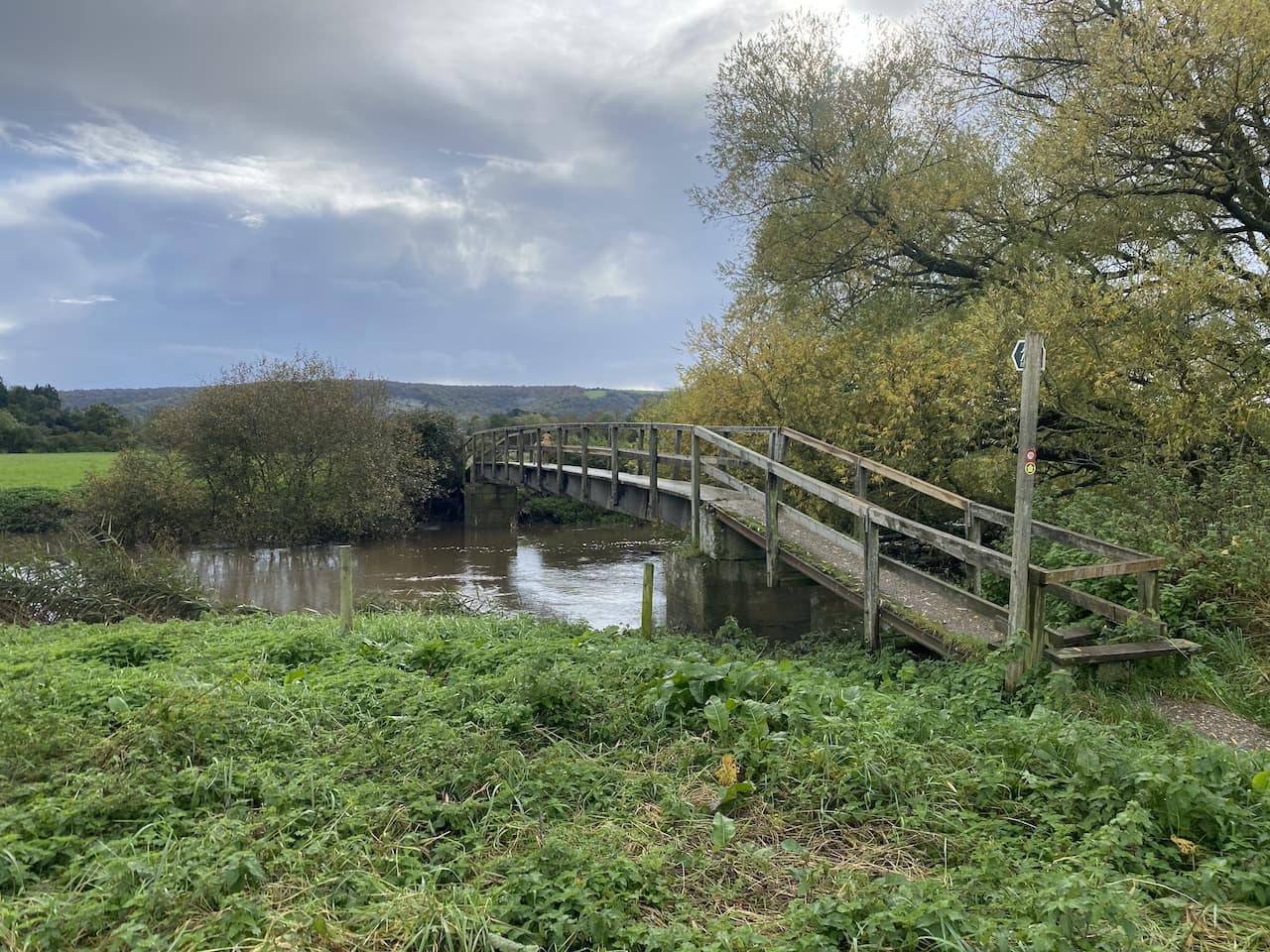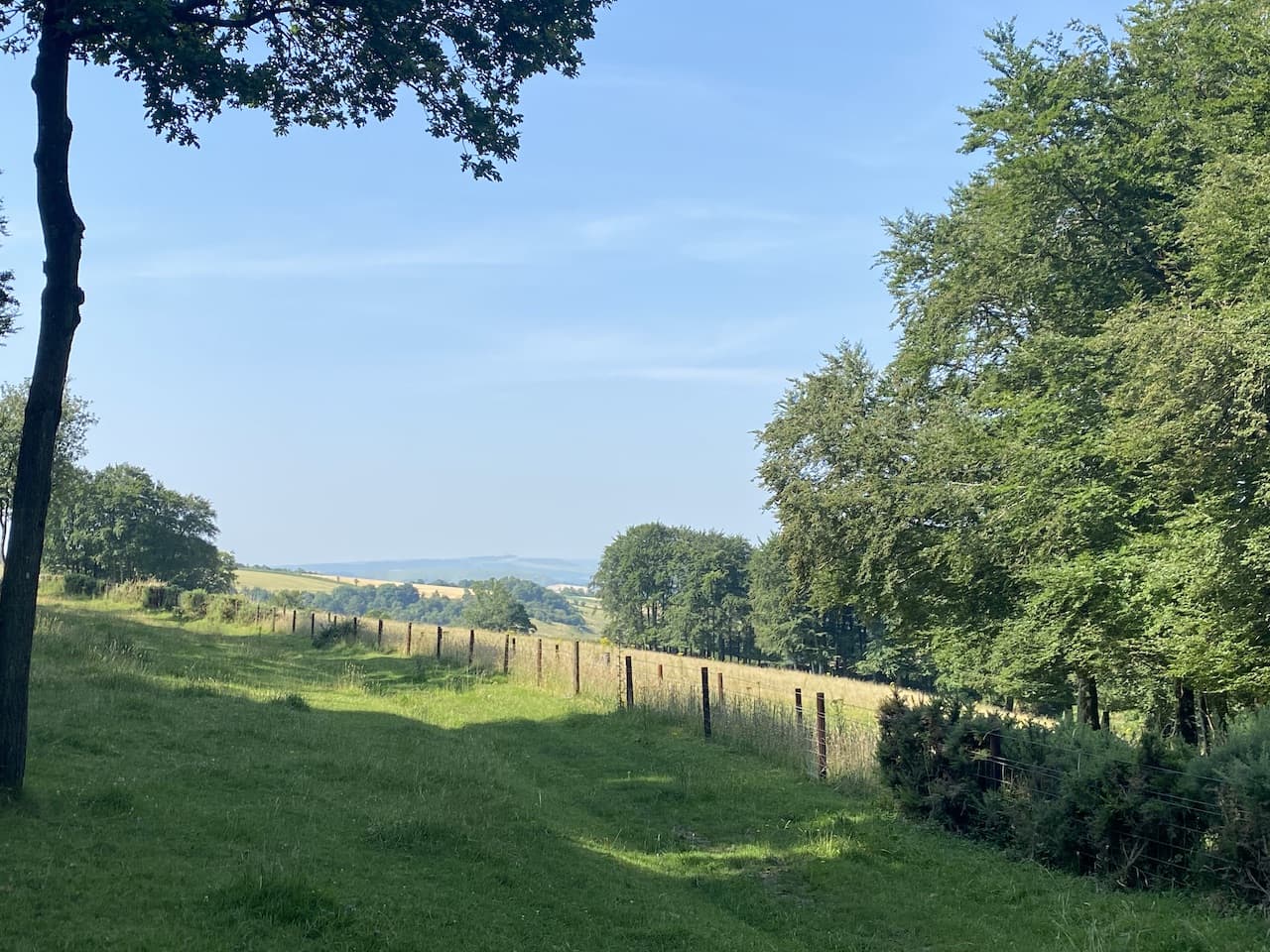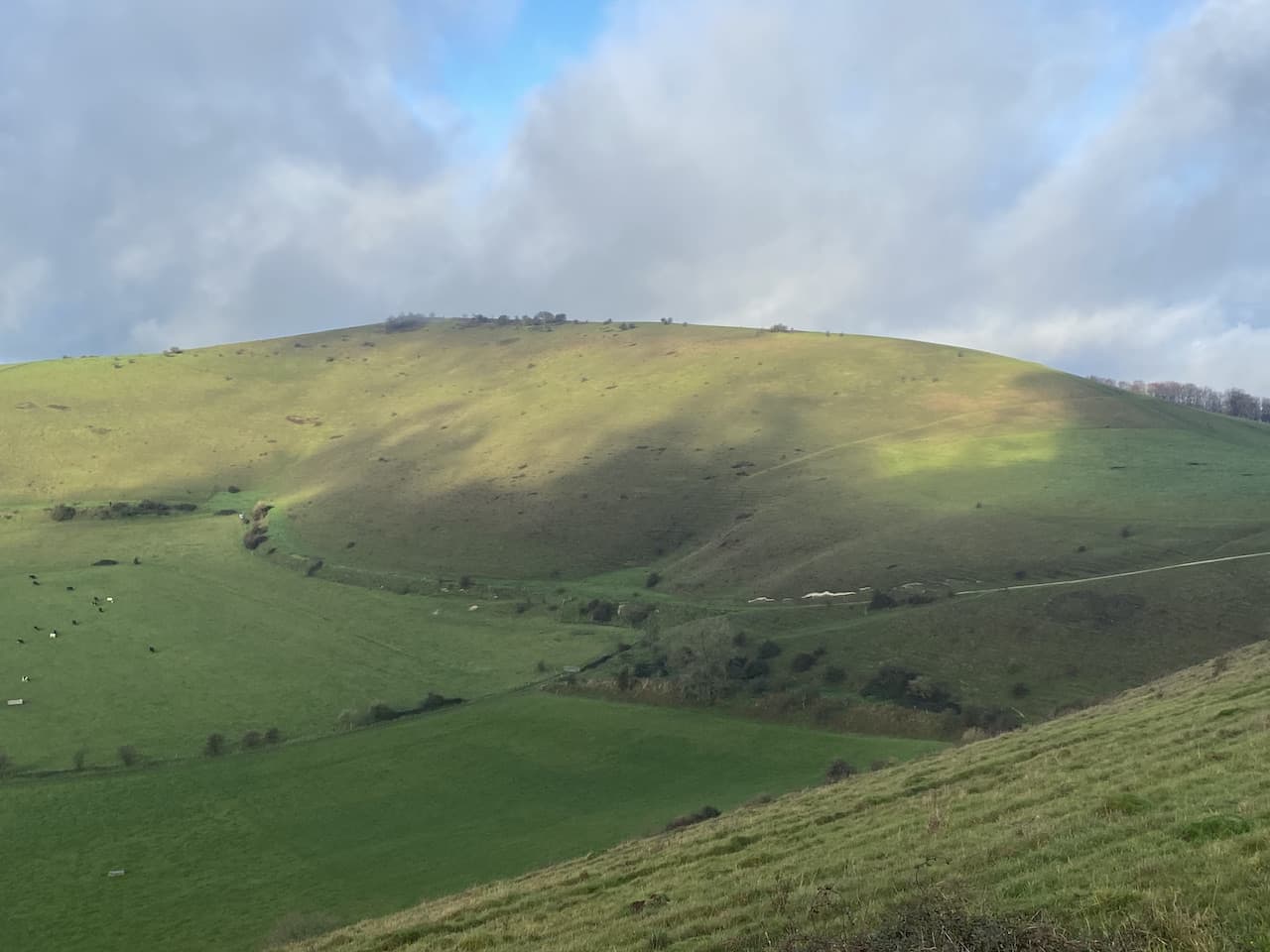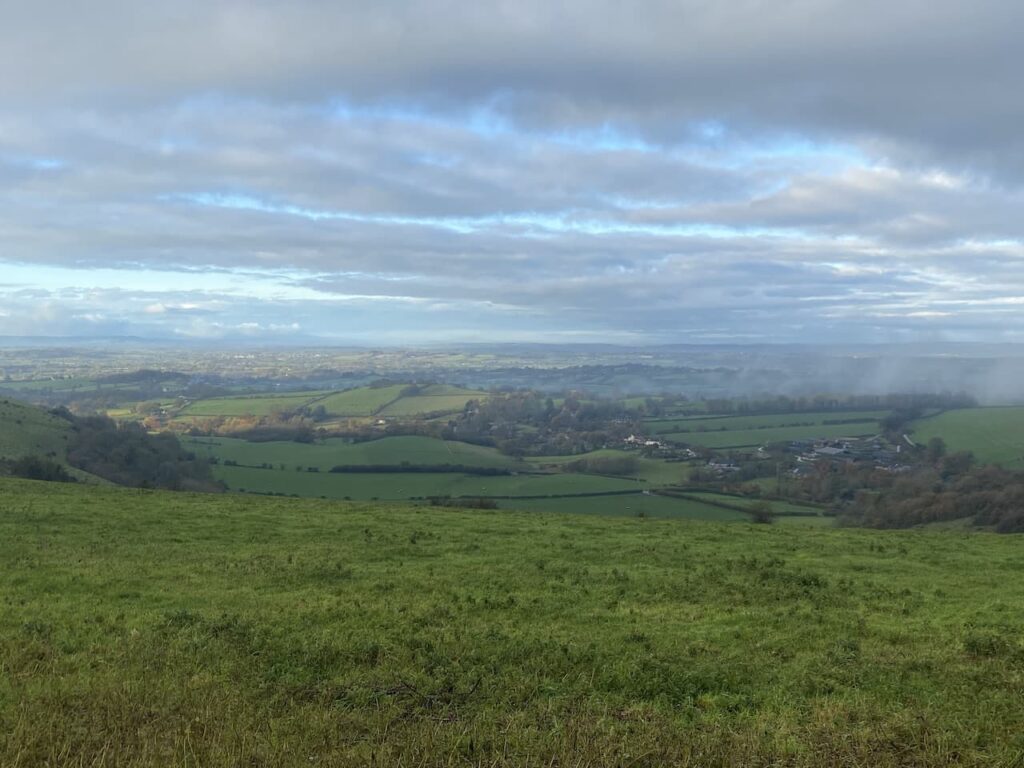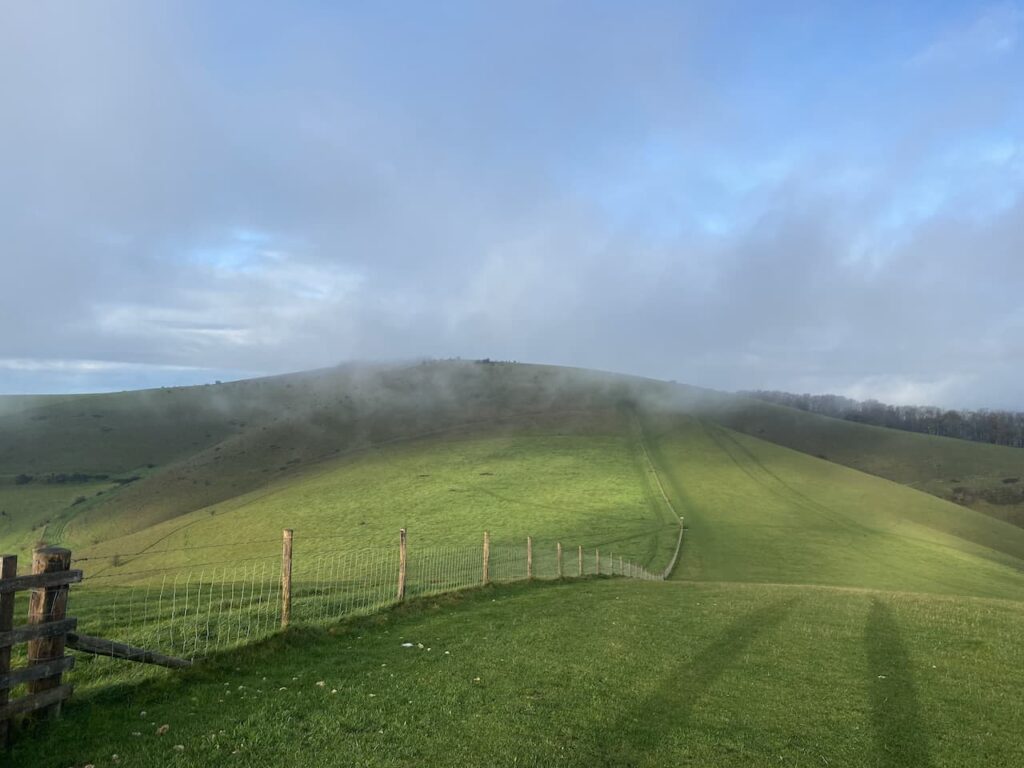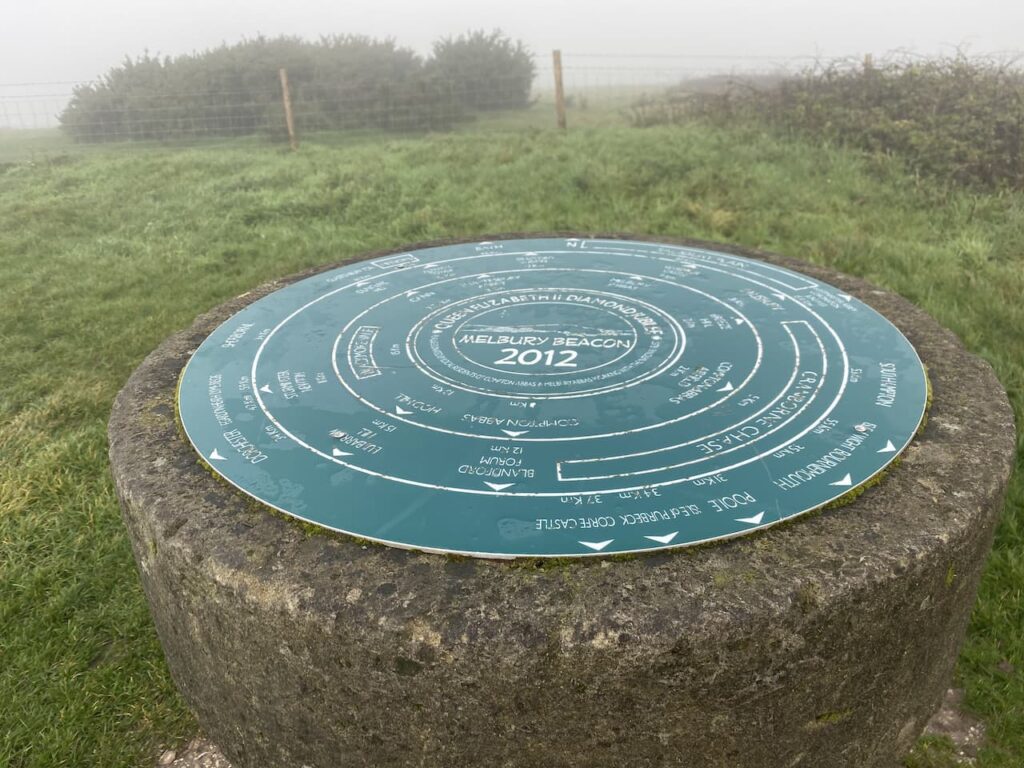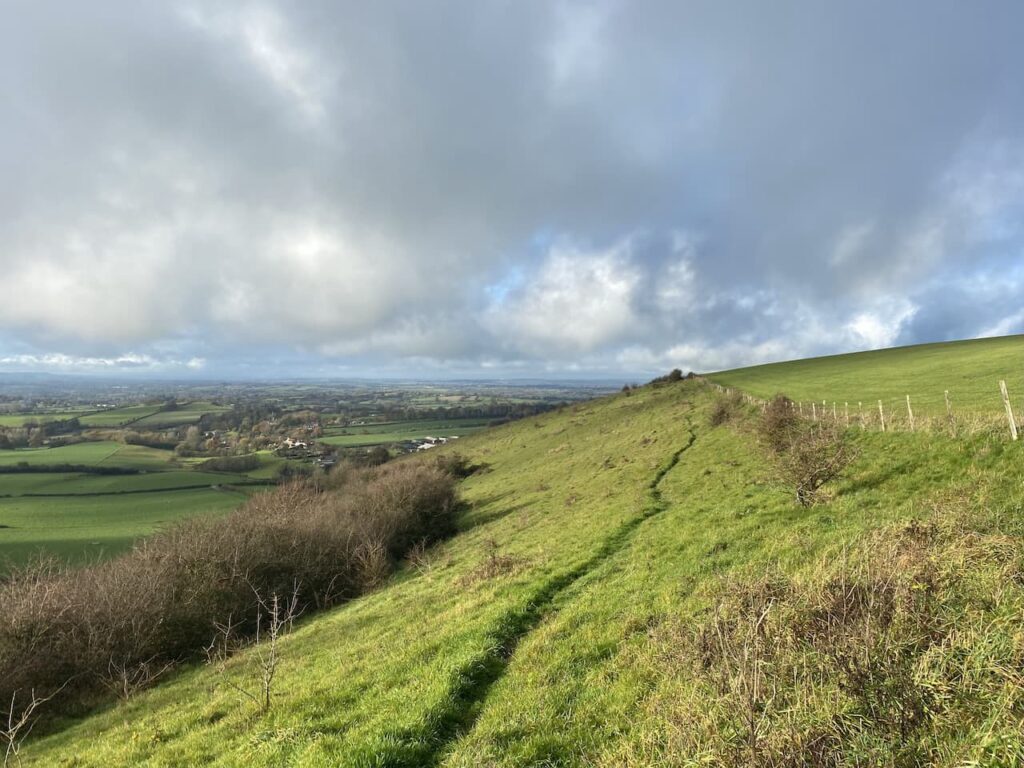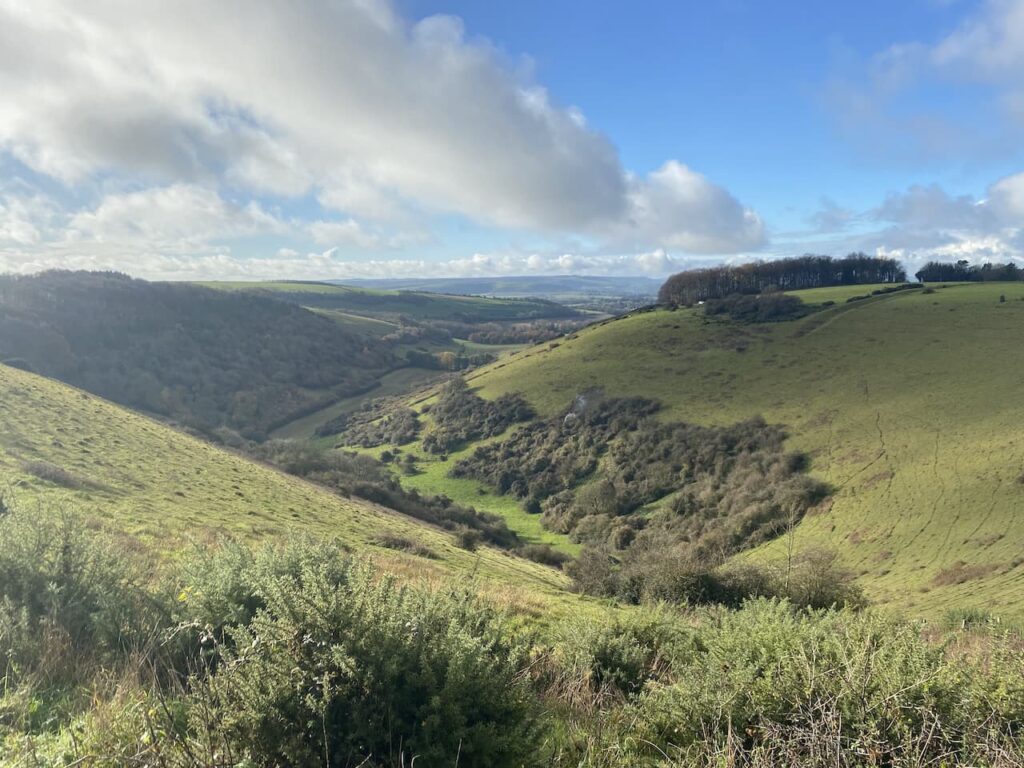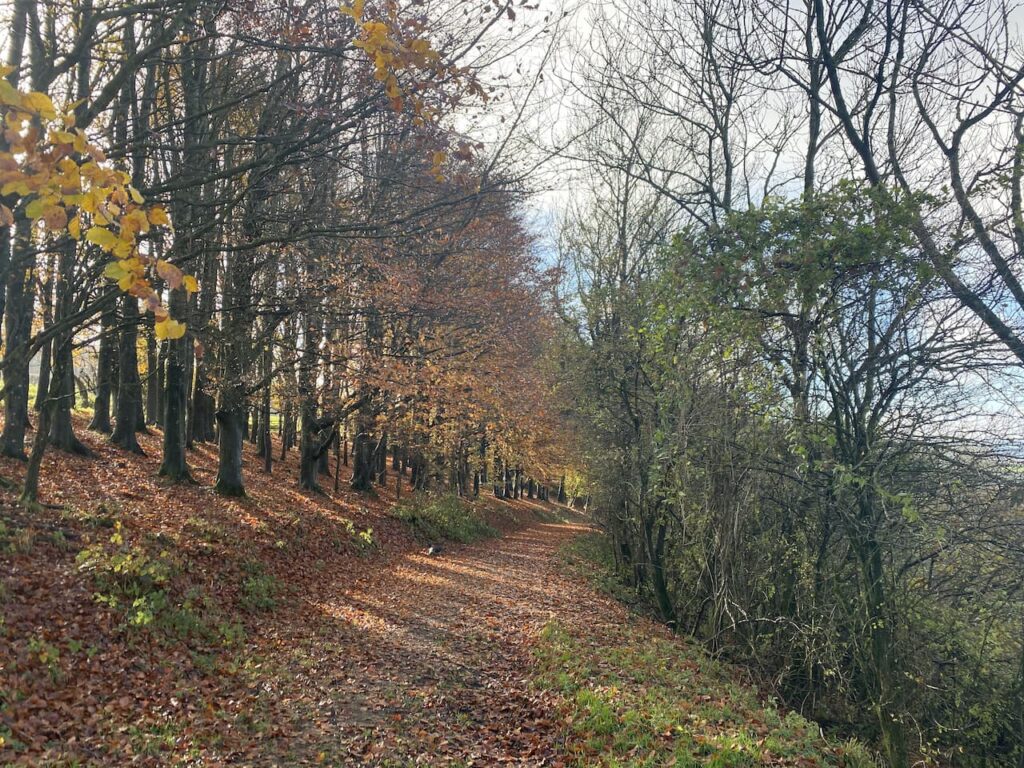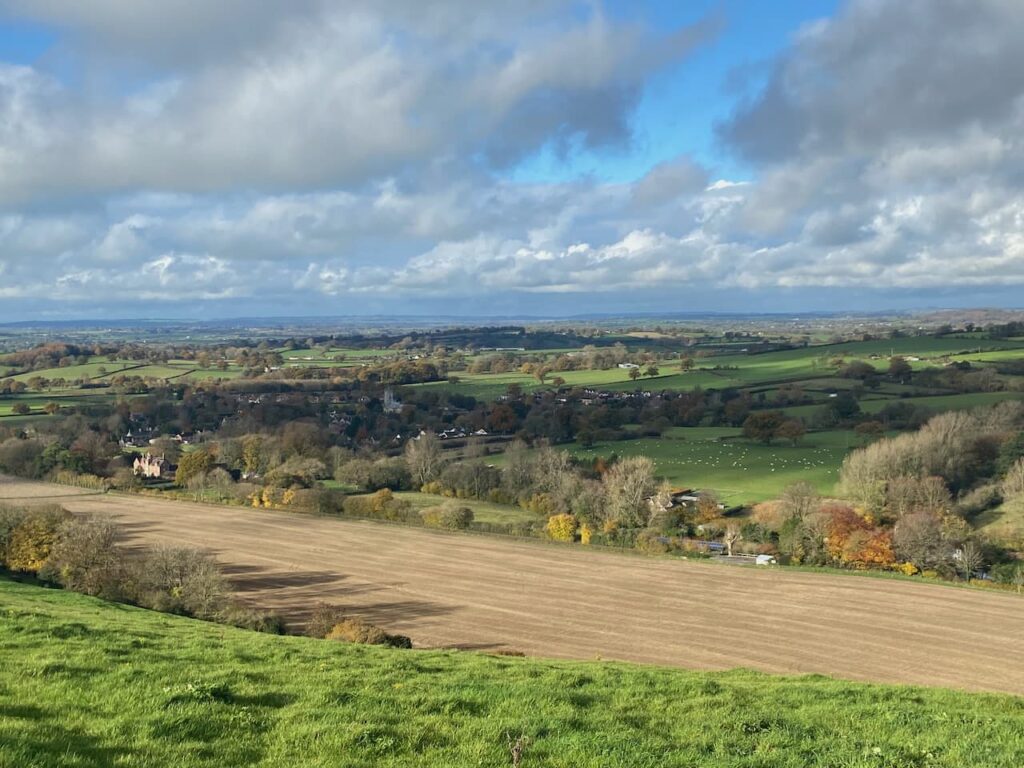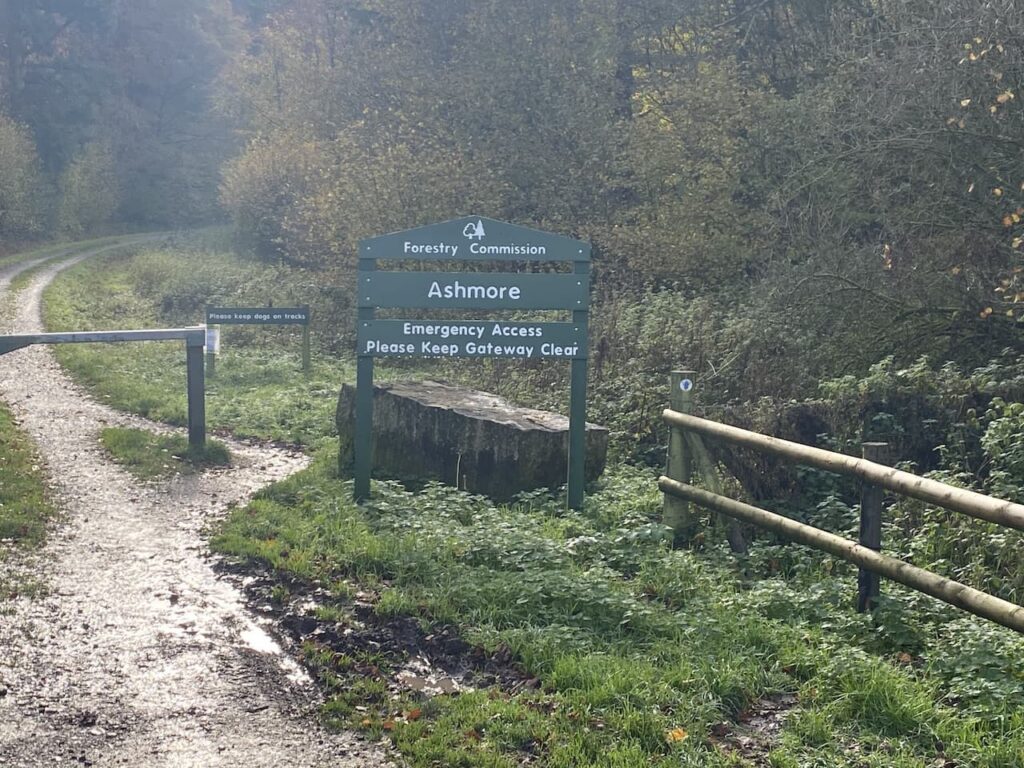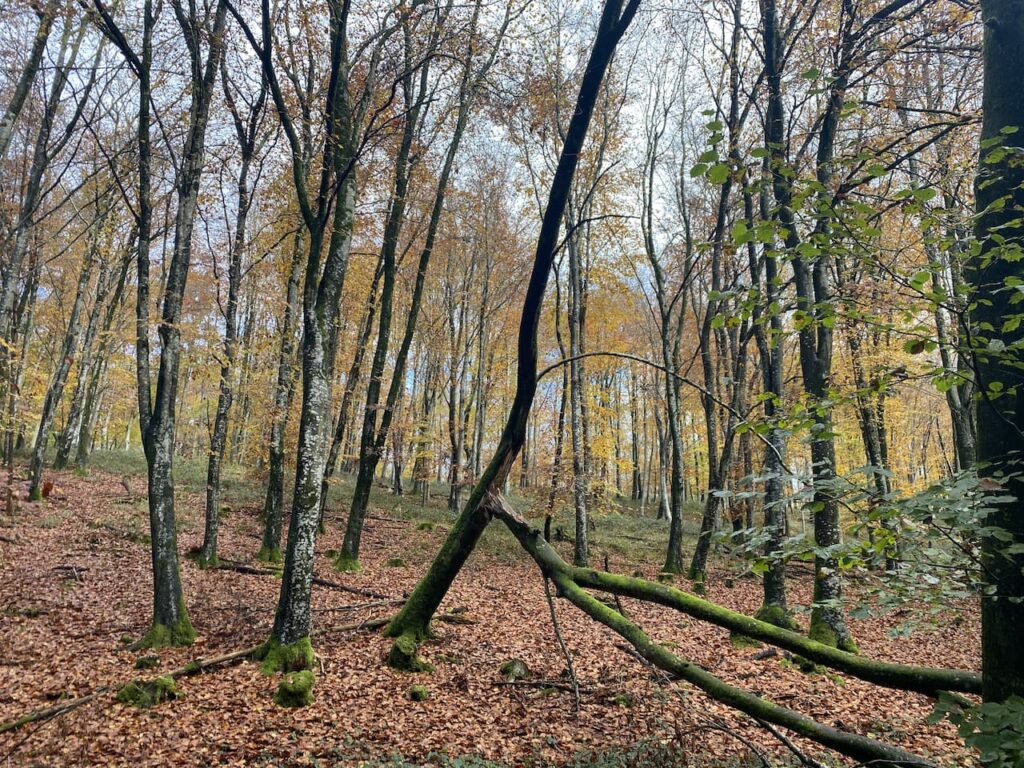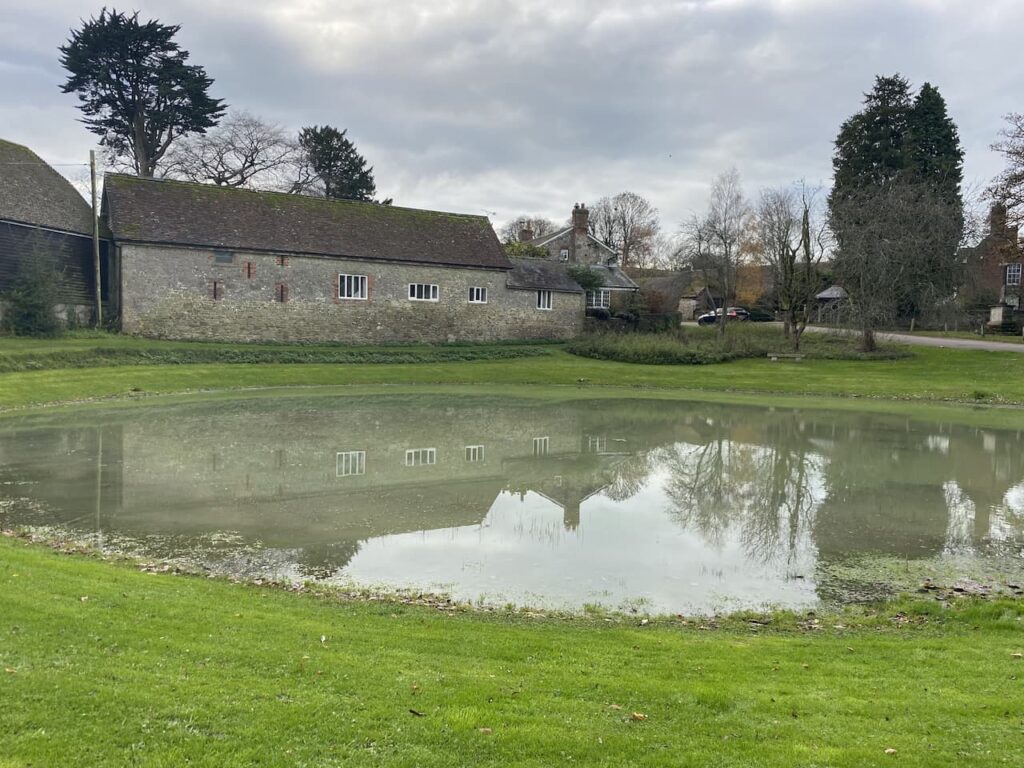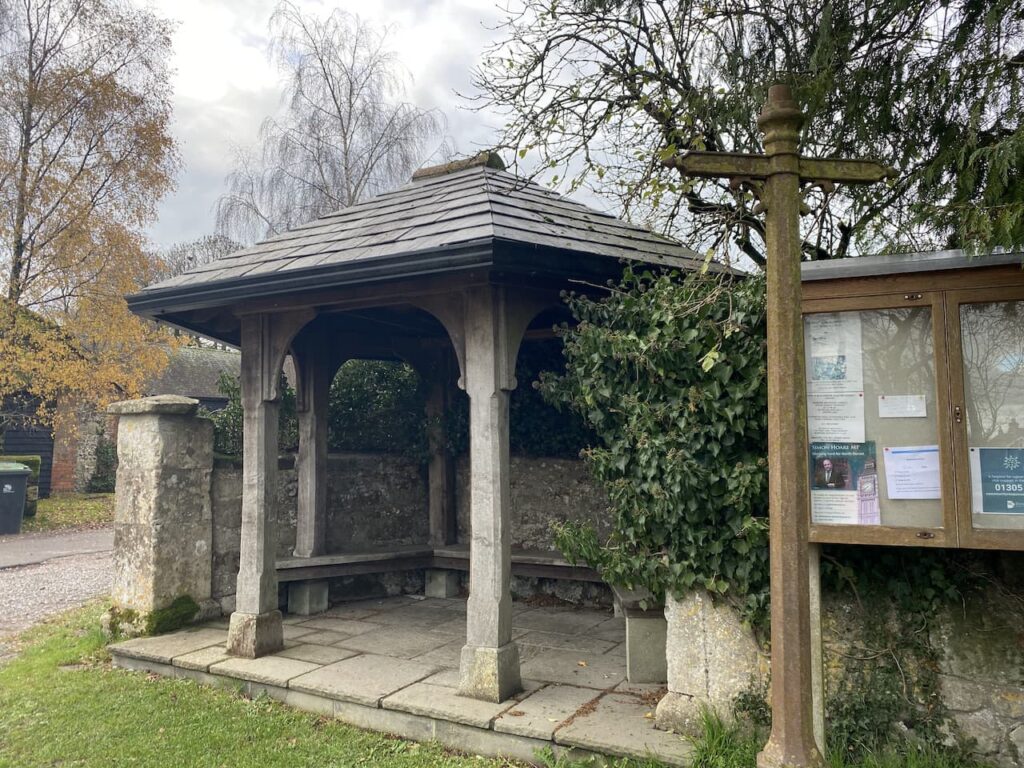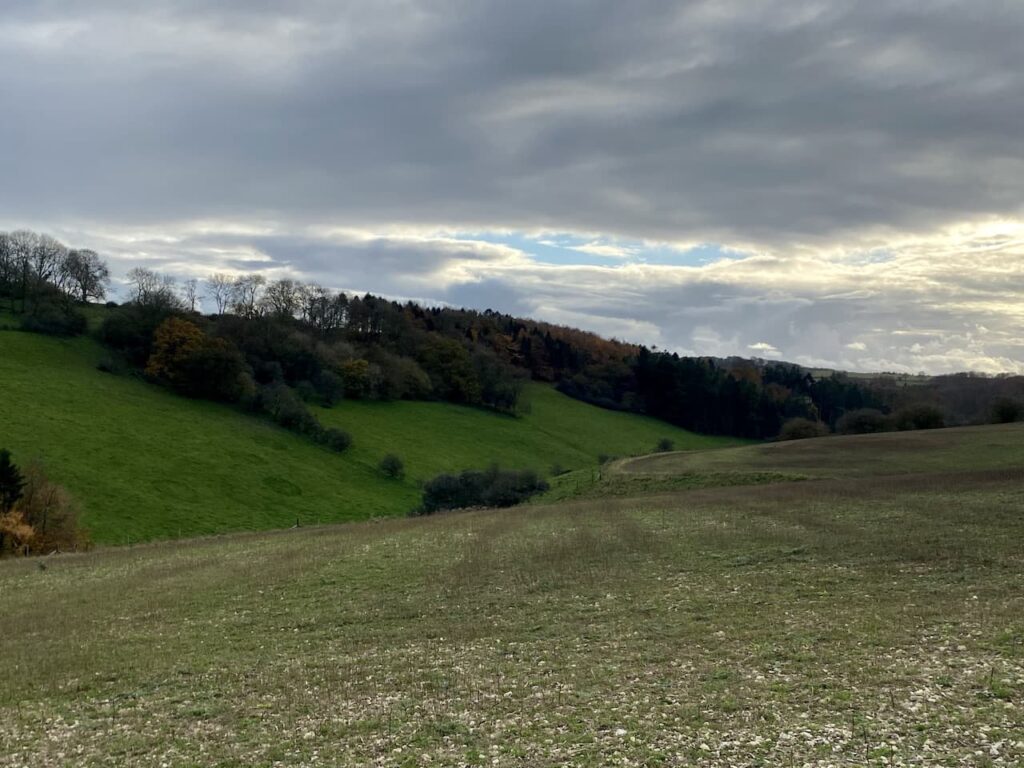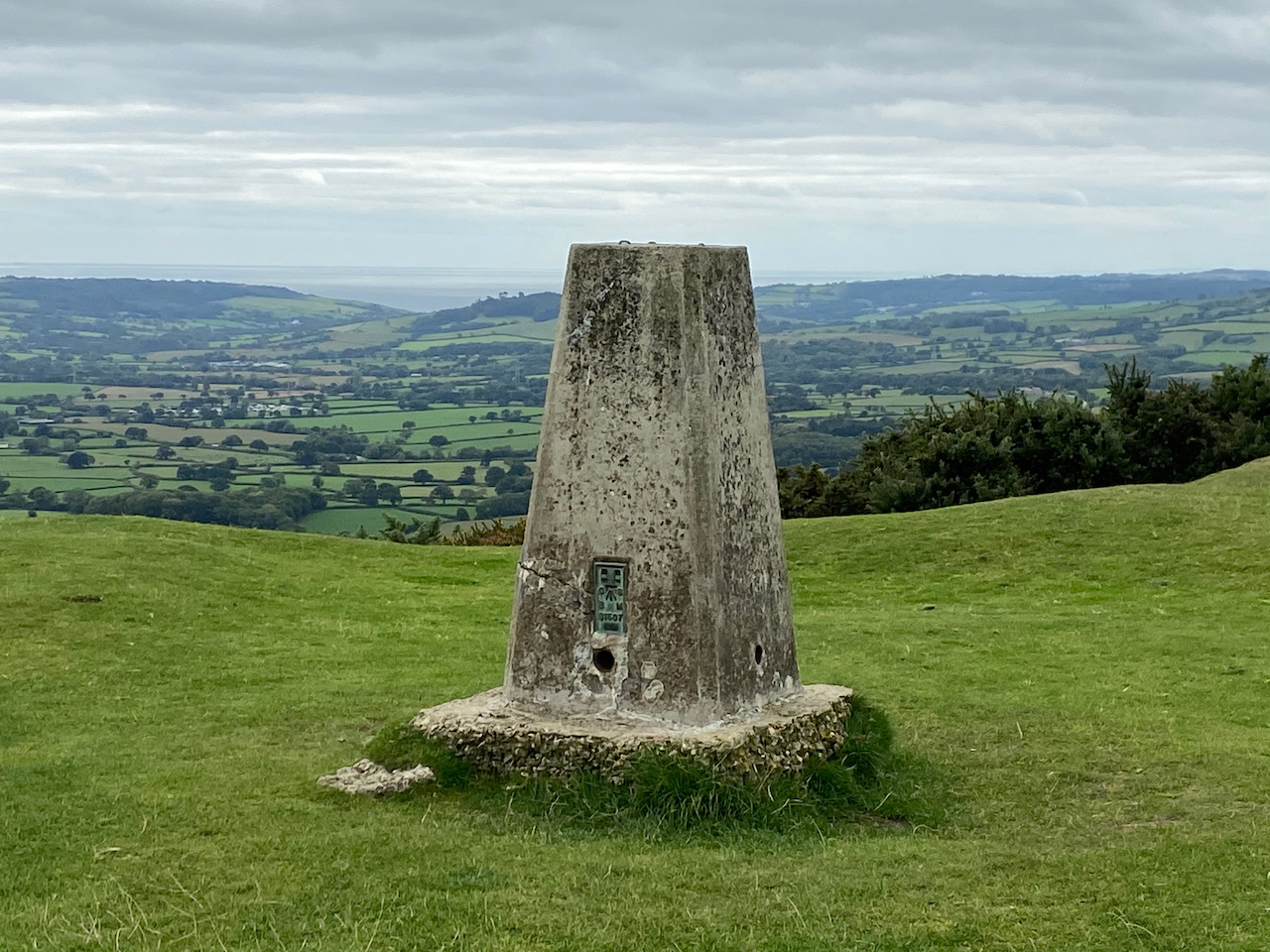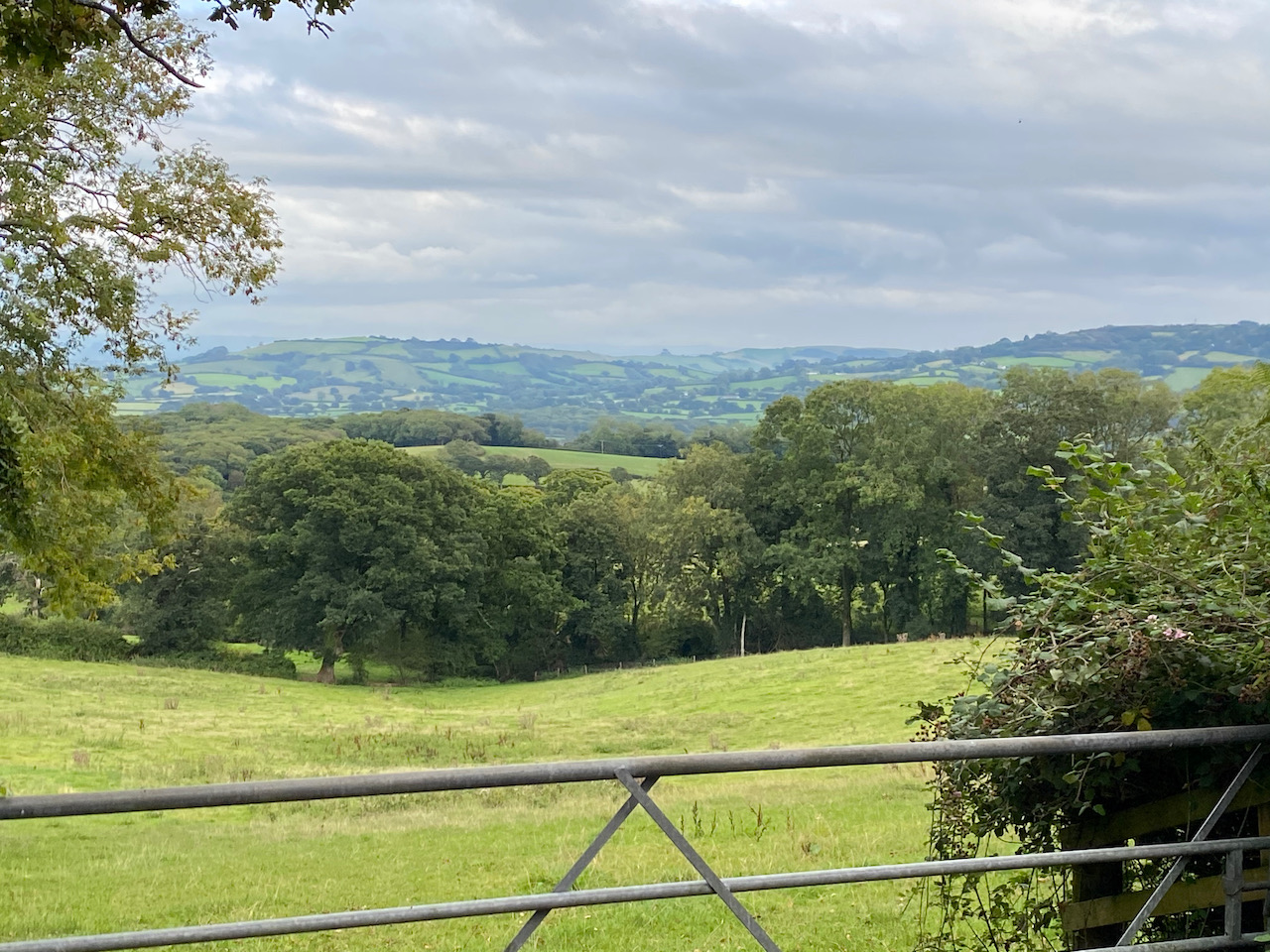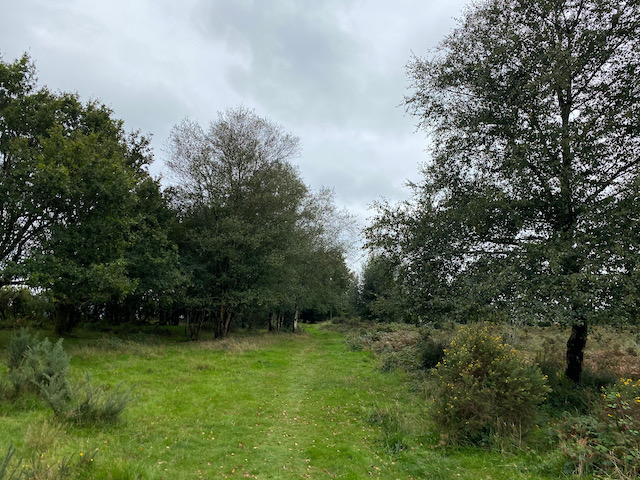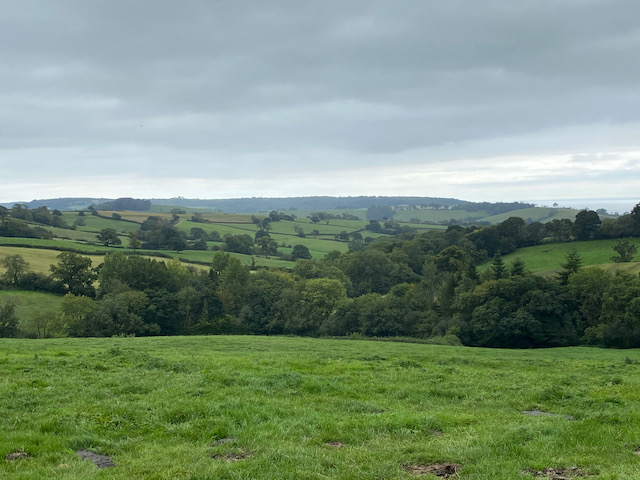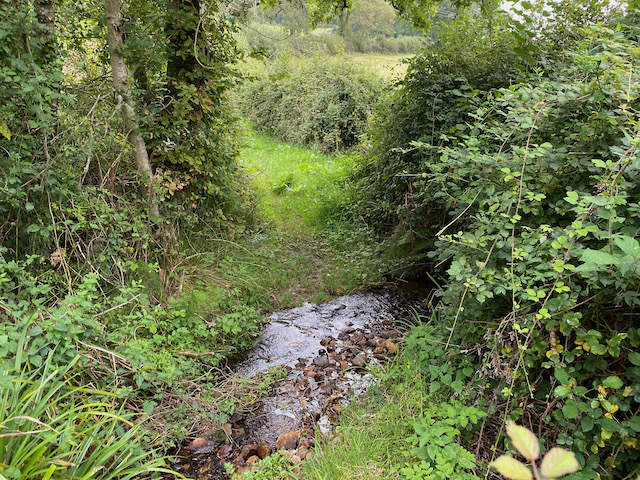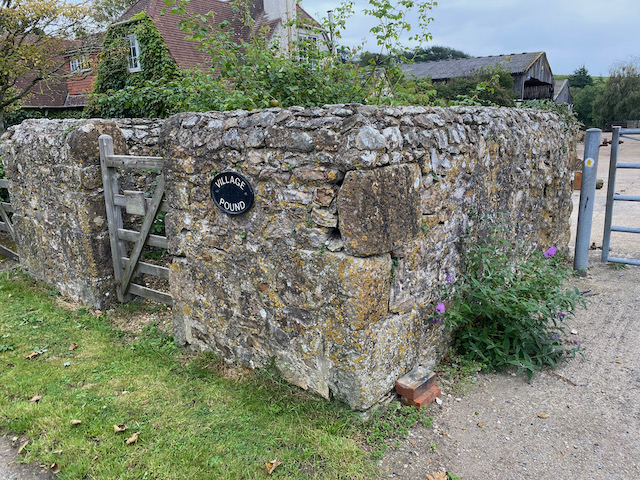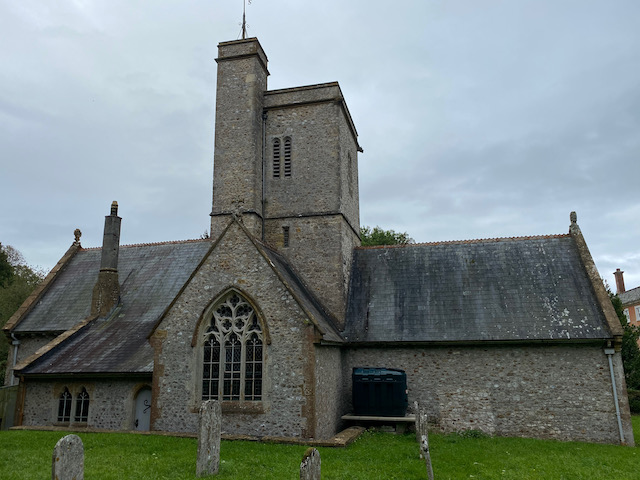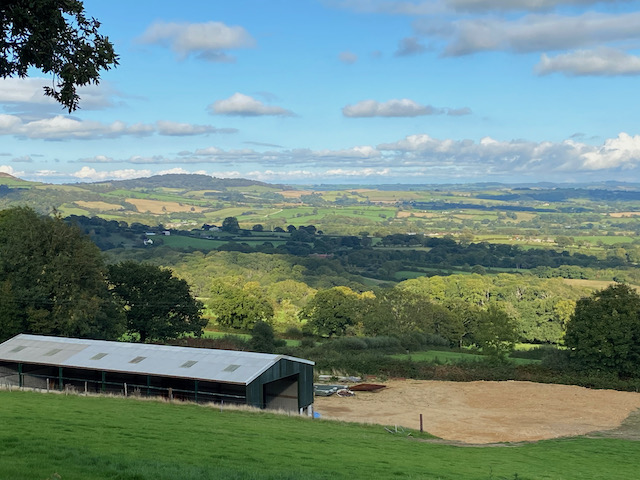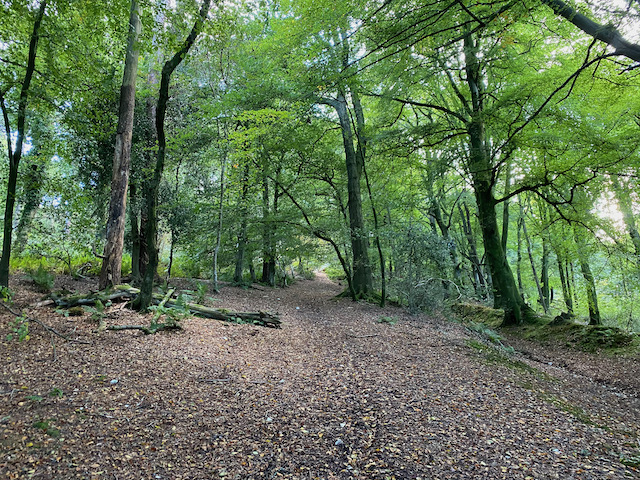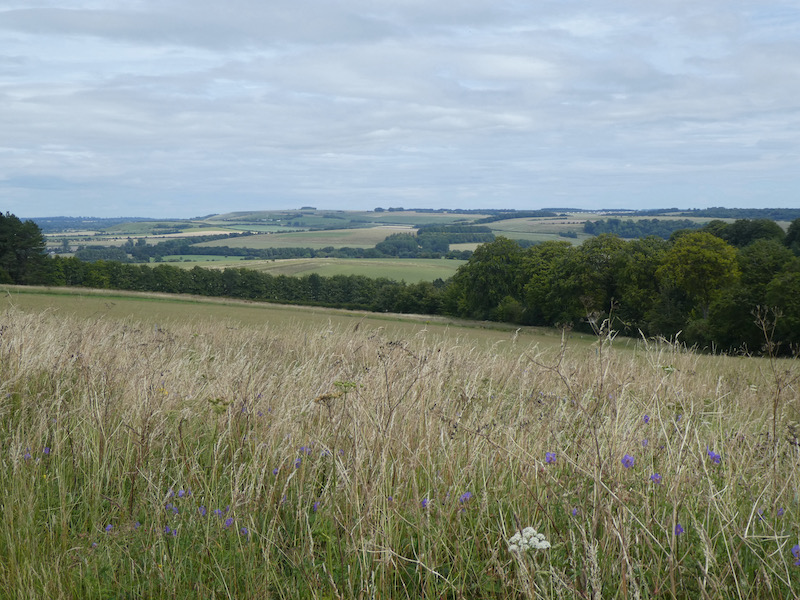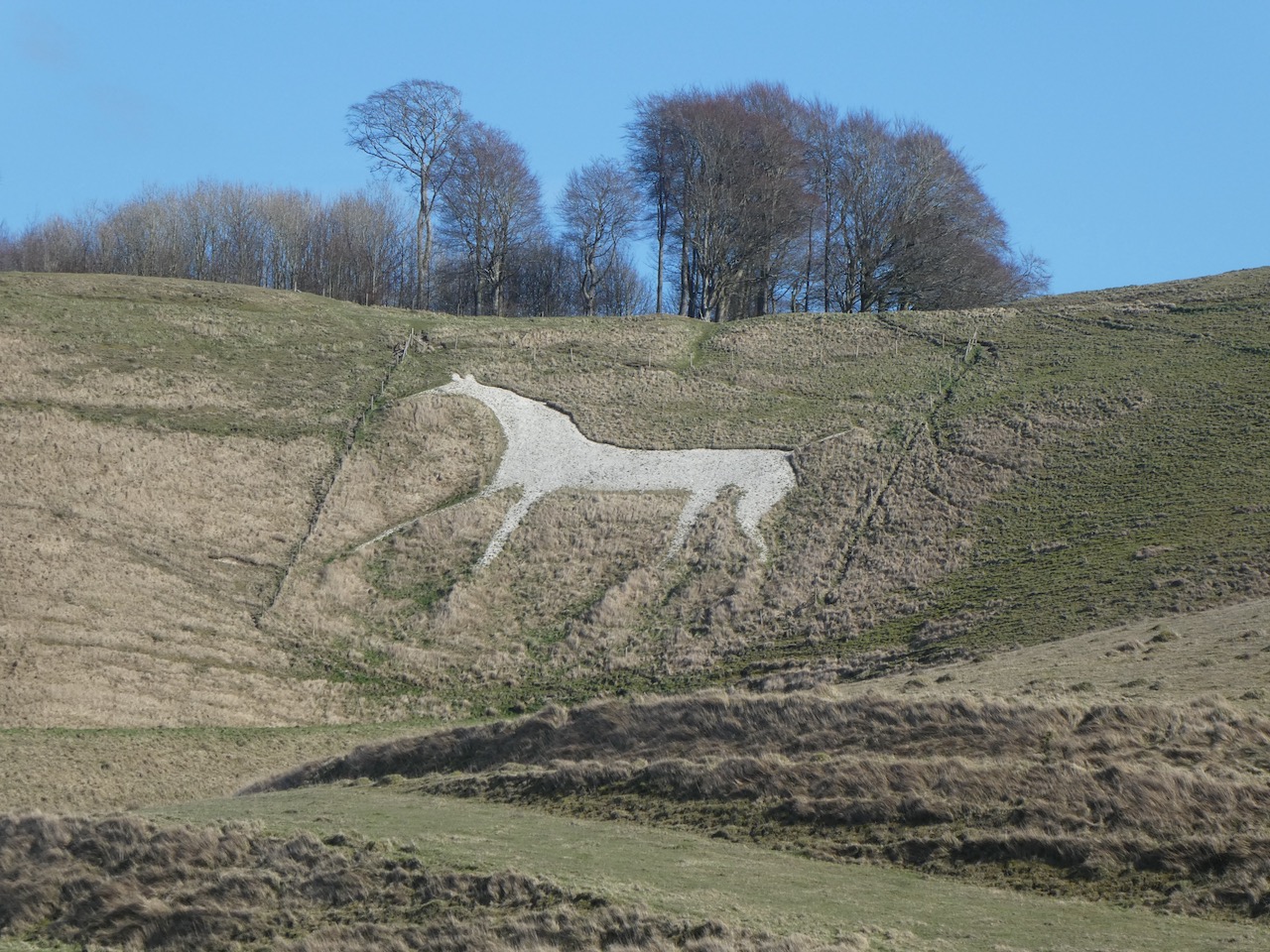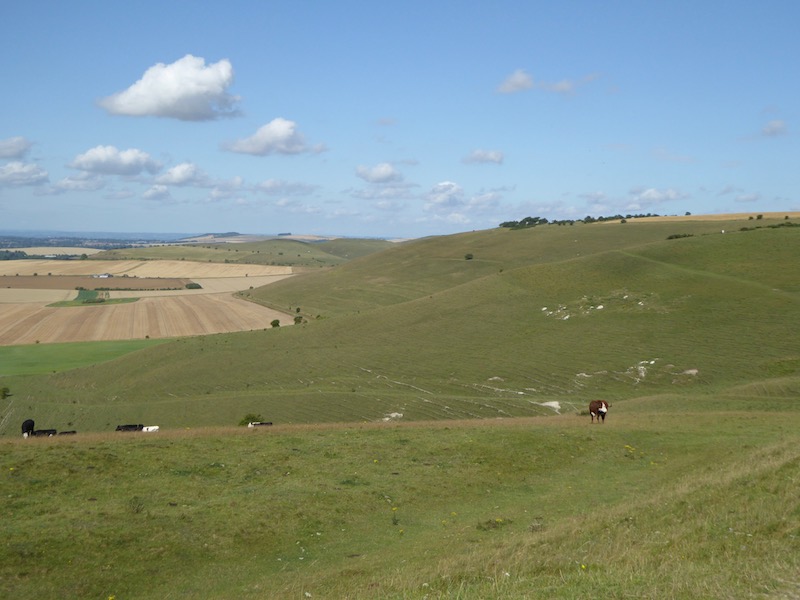I haven’t been out for a day’s walking since returning from my trek between Taunton and Gloucester a couple of weeks ago. A combination of wet weather and struggling with the aftermath of my last bout of Covid has meant I have lacked the desire to go walking for hours. However, today the forecast is marginally better and I have arranged to meet up with my walking buddy Nigel from New Forest Navigation.
The start point for our walk is the trailway car park on the junction of the A357 and Bere Marsh on the northern outskirts of Shillingstone (Grid Ref ST822119). This is a large free car parking area with a height restriction barrier.

From the car park we head under the disused railway bridge and turn right to walk up a slight incline to join the North Dorset Trailway and soon reach Shillingstone Station which has an array of locomotives and a cafe.

Apparently the canopy of the station was erected in 1899 especially for the Prince of Wales, the future King Edward VII, who was visiting Lord Wolverton’s nearby estate for a shooting party. There was concern that without the canopy some precipitation might fall on his regal head. There is no report about how he was protected from the elements whilst out shooting.

To our left is the River Stour, which has burst its banks and flooded the surrounding fields. Later we will be crossing the river between Child Okeford and Bere Marsh, hopefully it won’t be flooded there.

Passing the station we continue along the North Dorset Trailway old, this is a 14 mile route from Sturminster Newton to Spetsbury. It predominately follows the old track bed of the disused Somerset and Bristol Railway. This line once linked Bath to Bournemouth and opened in 1863 to connect the English Channel to the Bristol Channel, it operated until falling victim of the Beeching Cuts in 1966.

We ignore a couple of footpaths off to the right and stay on the disused railway line until we reach a point where the Wessex Ridgeway passes under the Trailway. Here we take a path down to the Wessex Ridgeway and then turn right along a lane and soon cross the A357, Blandford Road, joining a footpath on the far side which goes through a gate into a field.

We quickly pass through the field keeping a watchful eye on a bull on the far side. He is totally disinterested in us, this is a well-worn path and he must see lots of walkers and presumably has decided they present no threat to him. Through a gate we turn right along a lane and then quickly reach a junction where we turn left and follow the lane which soon becomes a track. At a fingerpost we stay with the main track following the route towards Shillingstone Hill.

It is now a long steady ascent through woodland towards the top of Shillingstone Hill.

At a junction of paths on the edge of the woodland we turn left and follow along the field boundary until we reach another junction of tracks, here we turn right along the northern edge of the field. There are fine views from here.

Now walking through Blandford Forest we take a track heading in a southerly direction which soon re-enters woodland.

This is a pleasant area of woodland to walk through. At a junction of tracks we turn left towards Folly Barn and Durweston. After passing Folly Barn we leave the tarmac lane and go through a gate to take a footpath which descends steadily to Sutcombe Wood.

We pass through a couple of gates and fields to reach the edge of Durweston. In the village we turn right and then at a junction take another right before quickly turning left into Church Road. From previous walks we know there is a bench in the churchyard of St Nicholas’ Church which is an ideal spot to sit in the sunshine and have our elevenses.

Refreshed we resume our walk by heading back along Church Road and turning right to walk downhill to cross the A357 at Durweston Cross to join Water Lane.

We continue along Water Lane and then just before the houses end we go left on a path leading to Mill Lane where we turn right to pass the mill and reach the River Stour and the mill pond. The water in the river is high and there is a lot of foam on the surface. It would be nice to think this is a result of the water pressure rather than effluent from the sewage works nearby. Ten years ago I would not have thought this but now it is a sad indictment of the state of our water system that Government Ministers feel it is acceptable for water companies to pump sewage into our rivers.

We have now joined the route of the Stour Valley Way, a long distance 62 mile path along the River Stour from its source at Stourhead to the sea at Hengistbury Head near Christchurch. After crossing a disused railway line we leave the Stour Valley Way and continue straight on along a track.

At a stile beside a gate we enter a field on the left and walk towards the edge of a housing development besides the A350. Joining the pavement we walk towards the White Horse Inn which also houses the village shop.

We will return to this point, but first we are going to bag a trig pillar at Downend Farm. To do this we cross the road and continue along for fifty metres and then turn right into Bottom Road. Initially this is a tarmac lane but becomes a hedge-lined path as it gradually heads uphill. At the end of the track we turn to the right and walk across to the trig pillar.

This trig has been moved from its original location which was in a field on the other side of the farm buildings. Whilst I prefer to visit trigs in their original location, I am happier that it is moved than be inaccessible or even worse destroyed. This is the 412th trig I have bagged.

From the trig we turn around and head back down Bottom Lane towards Stourpaine.

Back in the village outside the White Horse Inn we take the lane to the right of the pub, South Holme and follow this into the centre of the village. It looks like there is rain heading our way so we turn left at the end of the lane a sit on the stone bench inside the lych gate of the church to have our lunch.

By the time we have finished lunch the rain has eased to steady drizzle. Our route is now through the village along Manor Road heading north.

We are back on the route of the Stour Valley Way and follow the lane to pass cottages and then it becomes a track beside the River Irene.

At a junction of tracks we turn left, still on the Stour Valley Way heading steadily up towards Hod Hill.

After going through a gate we go through the ramparts of the Iron Age Hill Fort on Hod Hill.

There are a network of paths on the access land covering Hod Hill, but we stay with the route of the Stour Valley Way across the plateau and through the location of the Roman Fort which was built around AD350. We then descend towards a minor road and Keeper’s Lodge.

After crossing the road we take a path to the right of Keeper’s Lodge, still on the Stour Valley Way, it is a long steep ascent towards Hambledon Hill. As the path levels we go through a gate on our left and enter a field of cows, fortunately they are not at all bothered by us and we pass through to reach another gate without incident. Keeping the fence line to our right we head through this field to reach another gate.

The path now leads us to the Ordnance Survey trig pillar on Hambledon Hill. I have bagged this trig before but is still worth stopping to look at the views.

Soon we are on the edge of the impressive hillfort on Hambledon Hill.

There are a range of options of routes to take, we decide to head to the southern side of the fort for a good view of the ramparts.

The outlook from this hill across the Stour Valley is stunning.

On the far side of the fort we descend steadily to a gate leading to a hedge-lined path going into Child Okeford. At a minor road we turn left and head into the village passing the Baker Arms.

Just before the village shop we turn right into Haywards Lane and stay with this until we reach a footpath on the right which is opposite the entrance to a close called Jacobs Ladder. We go right and head through a kissing gate on the route of the Stour Valley Way and the St Edward’s Way.

The St Edward’s Way is a 30 mile long distance path which goes between the west door of St Mary’s Church in Wareham to Abbey Museum in Shaftesbury. This is the route that the body of the boy King, St Edward was taken in AD979 when it was moved from Wareham to Shaftesbury. The section we are now following is a fence lined path by an avenue of trees.

After going through a gate we continue across a field and then go through another gate to enter access land close to the river.

Our route across the field is blocked by flood water but we work a way around it to reach a footbridge over the River Stour.

The route is now a fence lined track which has flood water across parts of it, but once again we are able to negotiate a way around without getting wet feet. The path now reaches an interesting bridge made out of old railway lines filled with concrete which span a stream.

From here we cross a field at Bere Marsh Farm and return to our starting point. We have covered an interesting 12.5 miles and apart from one heavy shower have managed to avoid the rain. As always, walking in Nigel’s company has been an enjoyable experience. Before departing we make plans for our next walk in a few weeks’ time.
You can view this 12.5 mile walk on OS Maps and download the GPX File Here
To follow our walk you will need Ordnance Survey OS Explorer – 129 – Yeovil & Sherborne; OS Explorer – 117 – Cerne Abbas & Bere Regis; and OS Explorer – 118 – Shaftesbury & Cranborne
27th October 2023
© Two Dogs and an Awning (2023)
All information on this site is provided free of charge and in good faith and no liability is accepted in respect of damage, loss or injury which might result from it. To the best of my knowledge the routes are entirely on public rights of way or within areas that are open for public access.
Walking can be hazardous and is done entirely at your own risk. It is your responsibility to check your route and navigate using a map and compass.
